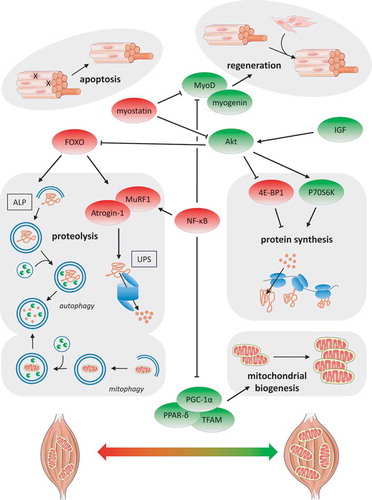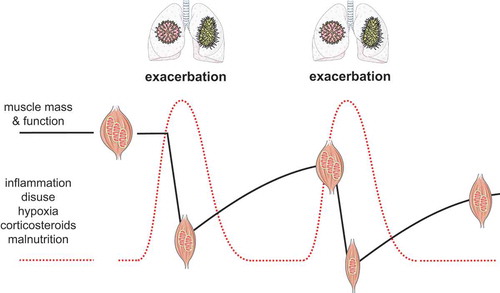Figures & data
Figure 1. Schematic overview of the main processes and pathways potentially involved in muscle dysfunction in COPD. Autophagy lysosomal pathway (ALP), ubiquitin–proteasome system (UPS), Forkhead box O (FOXO), muscle atrophy F-box (Atrogin-1), muscle-specific ring finger 1 (MuRF1), nuclear factor kappa-light-chain-enhancer of activated B cells (NF-κB), insulin-like growth factor (IGF), phosphatidylinositide 3-kinases (PI-3 K) serine/threonine protein kinase Akt (Akt), mammalian target of rapamycin (mTOR), eIF4E-binding protein 1 (4E-BP1), ribosomal protein S6 kinase (P70S6K), peroxisome proliferator-activated receptor-delta (PPAR-δ), peroxisome proliferator-activated receptor gamma coactivator 1-alpha (PGC-1α), and mitochondrial transcription factor A (TFAM)

Figure 2. Conceptual visualization of the step-wise decline of muscle mass, OXPHEN (reflected by the mitochondria) and function in COPD due to (recurrent) exacerbations. Muscle wasting and loss of function are accelerated during an exacerbation in response to acutely increased levels of COPD-related triggers of muscle dysfunction. During the recovery phase muscle regeneration is intrinsically impaired in COPD or incomplete due to a recurrent exacerbation

